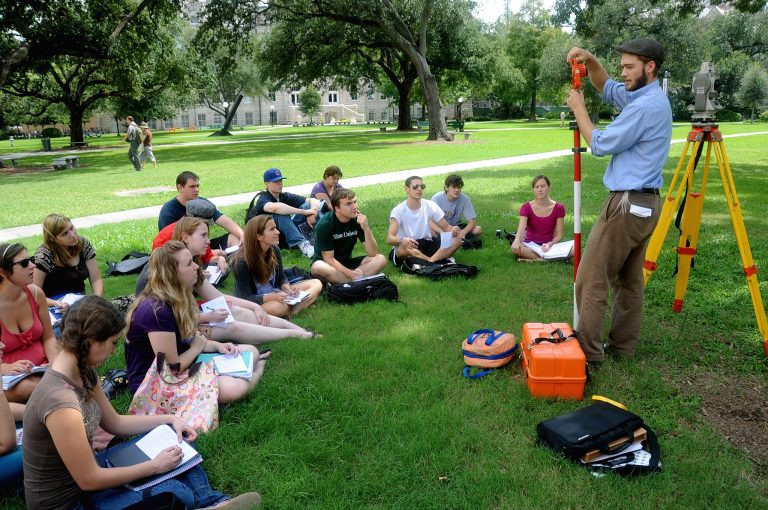There was a time when schooling took place largely outdoors, with students seated in open-air classrooms. With no walls to confine them, children were learning their lessons while taking in their wholesome natural environment at the same time. Although our modern school systems do not exactly embrace al fresco education, its natural benefits persist to this day.
The history of open-air classrooms
According to blogger MessyNessy, in early 20th-century Northern Europe, open air schools were a common sight, built to overcome the spread of tuberculosis at the time. With access to fresh air, good ventilation and the outdoors, outdoor learning aimed to provide a clean and healthy environment for students.
First conceived with the introduction of the Waldeschule, or “forest school” for sickly children in Germany, 1904, the concept soon evolved, leading to a movement for open air schools to boost students’ mental and physical health. Outdoor schools began popping up in other European countries, including Belgium, France, Switzerland, Hungary, England and Sweden.
By 1937, 96 open air schools were opened throughout Britain. The U.S. opened its first “fresh-air” school in 1908 in Providence, Rhode Island.
By the 1970’s, with the development of antibiotics and improved living conditions, open air schools were deemed unnecessary. They became more obsolete and finally disappeared from mainstream education.
Success
You are now signed up for our newsletter
Success
Check your email to complete sign up
While the concept of open-air schools is a thing of the past, there may be potential for a comeback, as outdoor learning has many benefits.
Benefits of outdoor learning
According to School Outfitters, students in outdoor classes are constantly engaging with their surroundings; they are always on their toes, as they move about their environment. Because they are often walking in changing landscapes and areas, students develop their cognitive senses, building up quick thinking and perception to better adapt to their surroundings.
A study conducted in 2018 showed that learning outdoors is both a fun and intuitive experience for kids, helping them focus on their studies after a trip through nature. The study involved students from two classrooms, where they had to learn biology both outdoors and indoors. After assessments from the teachers and student photos, it was found that the students were more engaged with their outdoor lessons than were in their indoors lessons.
Researcher Ming Kuo of the University of Illinois believes that this study is crucial because kids also “pay better attention in [an indoor] class after an outdoor lesson.” She added that teachers can also benefit from outdoor lessons, as they can both teach and promote fun for students at the same time.
In addition to engagement, studying in an open environment also helps to provide students with good physical and mental health. Greater Good Magazine suggests that an open-air class would help reduce stress, regain lost attention and enhance immune function in students – the healthier the child, the better the learning. Kuo’s research also added that teaching outdoors helps to increase their interest and motivation to learn, while improving information retention at the same time.
Fresh air also promotes better breathing, which is beneficial for developing minds. Moreover, exposure to the sun is an important source of vitamin D, an important compound for boosting the immune system. Nature may also provide a catalyst for the production of serotonin – the chemical in the human body that serves to combat depression.
According to Kuo, the current movement of keeping students indoors is detrimental to their progress.
“You can add as much instructional time as you want and keep pouring, but once that cup is full, it’s full,” she said. “You have to find ways to give kids more capacity to take things in, before it makes sense to spend any more time with instructional teaching.”
Kuo believes that outdoor studying could help to increase said capacity, hinting that kids “need nature.” She is optimistic of what outdoor studies can do for the good of the new generations – to help them improve their prowess within nature.
Whether it be to give the face a break from the masks, the eyes a break from the screens, or the skin a good dose of sunshine, outdoor lessons may be something to seriously consider for the health of our children. Obstacles like weather can be overcome with proper clothing and gazebo or pavilion settings, but the real obstacles lie in our minds. Is it so impossible to become reconnected to the planet we call home? Wouldn’t we rather have our offspring looking at the unfolding of nature rather than the degeneration of society that unfolds on TikTok?















